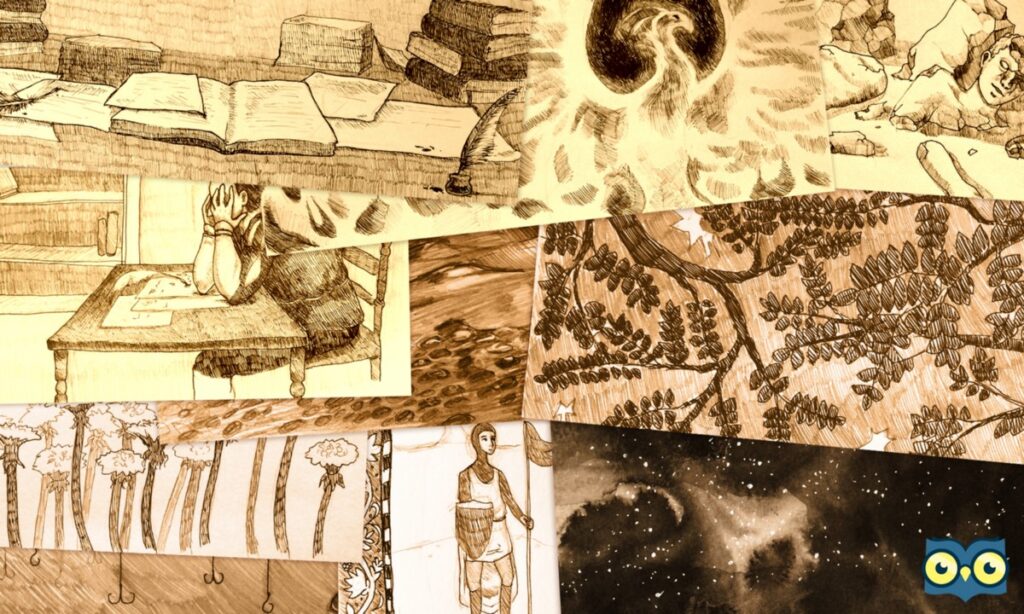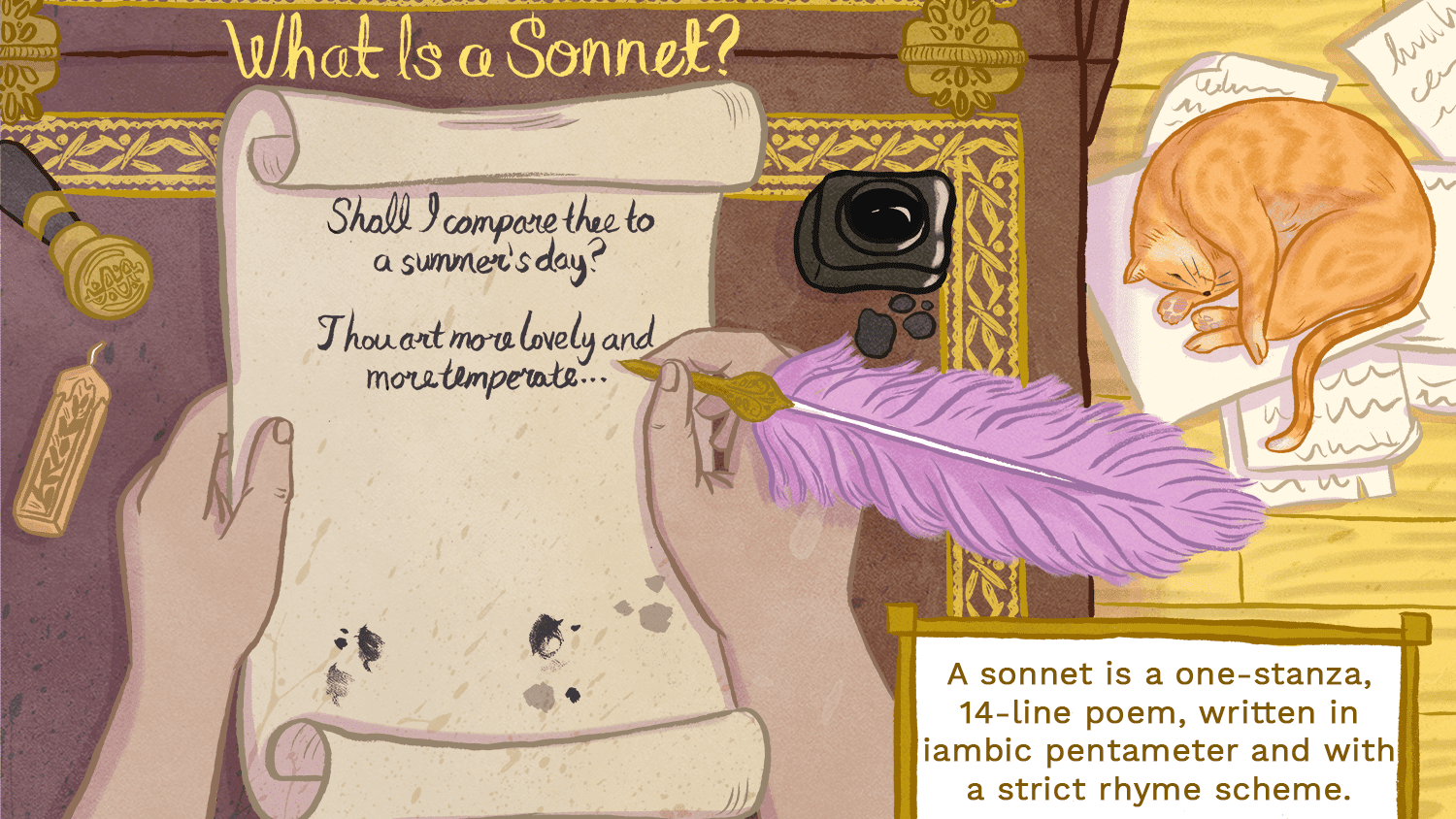Area: Science
Abstract: Figurative scienceis a strategy that invites students to make meaning by describing a subject using figurative language. As the classic Shakespearean “Sonnet 18: Shall I compare thee to a summer’s day?” the author employs metaphor to compare the lover’s beauty to an eternal summer, the student describes a physics law or specific subject using figurative language.
Learning objectives:
- Using deep perception and observation to examine and describe an object.
- Metaphorical thinking
- Physics laws
- Figurative language
Advisable age of students: 9-16. Attention to diversity and inclusion aspects to have in account:
Previous knowledge: Depends on the picked subjects, usually something already studied during the scholar year, that students can review and exercise on
Total duration: 45-60 min
Materials: Drawing materials, papers, books, common objects, music instruments (if wanted)
Phase 1 Visualisation
Duration: 15 min
Development : As the classic Shakespearean “Sonnet 18: Shall I compare thee to a summer’s day?” the author employs metaphor to compare the lover’s beauty to an eternal summer, the student describes a physics law or specific subject using figurative language. The facilitator/teacher assembles few specific theories/laws from the year programme (e.g., 3rd year physics)they want to test of. Each student picks one and starts to build a sonnet/poem (even a song, a drawing or other art expressive forms) to describe it. Invite students to respond to a prompt. Remind students that the same subject can and should be used by different people. The activity could be run in small groups/teams.
Phase 2 Artistic action and experimentation
Duration: 30 min
Development:
• Show the topic to the students to give them a common general ground (e.g., a physics area) and select the specific subjects secretly (e.g.,Theory of relativity, Laws of thermodynamics). Use subjects already studied in class during the year.
• If it has be done individually, each student picks one subject randomly (or if played in teams, the team pick one). The same subject can be presented by more than one team/student.
• The participants must describe the picked subject using figurative language. It could be done writing a short poem or sonnet, a song (maybe rap), or drawings that are not literally descriptive.
• Once each one has finished (give them 20/30 minutes), it is show time.
• The challenge is about making the others understating what subjects you picked without knowing it.
Phase 3: Reflexion and debate
Duration: 15 min
Development: Review the difference between the different forms of figurative language (simile, metaphor, hyperbole, personification, synecdoche, and onomatopoeia)
Engagement –
How it was for you to collaborate with your peers? (If done in teams).Did you face any challenge during the development of the exercise? How did you overcome? Do you think using figurative language to describe science laws and concepts has been an engaging approach to explain the theory?
Efficacy –
Do you think the activity was well-explained?
How did you find the support of the trainer?
Did you learn something about the topic?
What would you suggest to improve the trainer approach? And what about the activity?
Do you think the material was correctly set for the development of the exercise?
Is there any other suggestion or reflection that would you like to share?
References and links: https://www.poetryfoundation.org/poems/45087/sonnet-18-shall-i-compare-thee-to-a-summers-day


